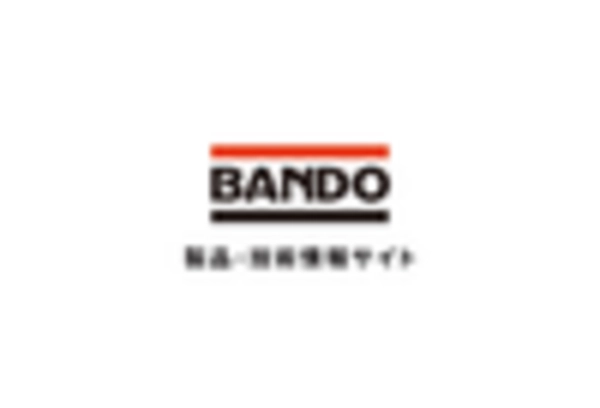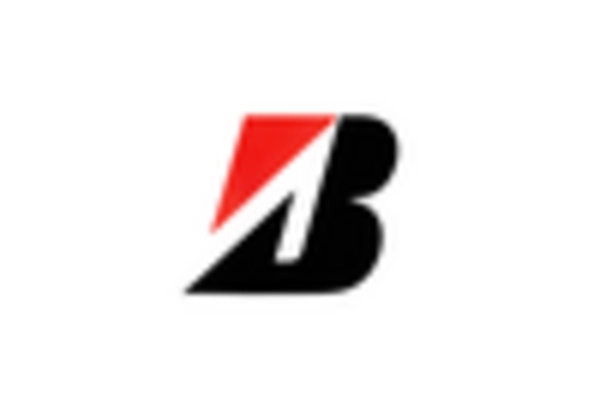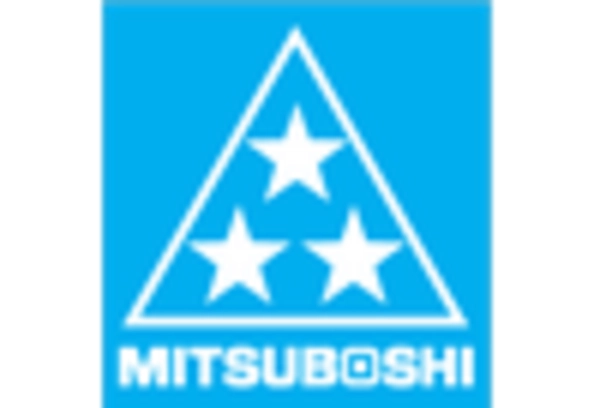Growth in E-commerce and Retail
The rubber conveyor-belts market is expected to grow due to the rapid expansion of e-commerce and retail sectors in the US. As online shopping continues to gain traction, logistics and warehousing operations are evolving to meet consumer demands for faster delivery times. In 2025, e-commerce sales are projected to reach approximately $1 trillion, necessitating efficient material handling solutions. Rubber conveyor belts are integral to modern distribution centers, facilitating the movement of goods from storage to shipping areas. This trend indicates a shift towards automation and advanced logistics systems, where conveyor belts play a crucial role in enhancing operational efficiency. Retailers are increasingly investing in automated systems that incorporate rubber conveyor belts to streamline their supply chains, thereby driving demand in the rubber conveyor-belts market.
Infrastructure Development Projects
Infrastructure development projects across the US are significantly influencing the rubber conveyor-belts market. With the government prioritizing investments in transportation, energy, and public works, the demand for conveyor systems in construction and logistics is expected to rise. In 2025, federal and state infrastructure spending is anticipated to exceed $1 trillion, creating a favorable environment for rubber conveyor-belt applications. These belts are essential for transporting materials such as gravel, sand, and aggregates, which are crucial for construction projects. Additionally, the growing emphasis on efficient supply chain management in logistics and warehousing further drives the need for reliable conveyor systems. As infrastructure projects progress, the rubber conveyor-belts market is likely to benefit from increased orders and contracts, positioning it as a key player in the broader construction and logistics sectors.
Rising Demand in Manufacturing Sector
The rubber conveyor-belts market experiences a notable surge in demand driven by the expanding manufacturing sector in the US. As industries such as automotive, food processing, and packaging continue to grow, the need for efficient material handling solutions becomes increasingly critical. In 2025, the manufacturing sector is projected to contribute approximately $2 trillion to the US economy, indicating a robust environment for rubber conveyor-belt applications. This growth is likely to enhance the adoption of conveyor systems, which are essential for streamlining production processes. Consequently, manufacturers are investing in advanced rubber conveyor-belt technologies to improve efficiency and reduce operational costs. The increasing focus on automation within manufacturing further propels the demand for high-quality rubber conveyor belts, as they play a vital role in ensuring seamless operations and minimizing downtime.
Environmental Regulations and Compliance
The rubber conveyor-belts market is influenced by stringent environmental regulations in the US. As industries face increasing pressure to adopt sustainable practices, the demand for eco-friendly conveyor belts is on the rise. In 2025, it is estimated that over 30% of manufacturers will prioritize sustainability in their procurement processes. This shift is prompting manufacturers to develop rubber conveyor belts that utilize recycled materials and environmentally friendly production methods. Compliance with regulations not only enhances corporate responsibility but also opens new market opportunities. Companies that invest in sustainable conveyor solutions are likely to gain a competitive edge, as consumers increasingly favor environmentally conscious products. Thus, the rubber conveyor-belts market is expected to evolve in response to these regulatory pressures, fostering innovation and sustainability.
Technological Innovations in Material Handling
Technological innovations in material handling are reshaping the rubber conveyor-belts market. The integration of smart technologies, such as IoT and AI, into conveyor systems enhances operational efficiency and predictive maintenance capabilities. In 2025, the market for smart conveyor systems is expected to grow by over 20%, reflecting the increasing adoption of advanced technologies. These innovations allow for real-time monitoring of conveyor performance, reducing downtime and maintenance costs. Furthermore, the development of specialized rubber compounds improves the durability and performance of conveyor belts, catering to diverse industrial applications. As industries seek to optimize their operations, the demand for technologically advanced rubber conveyor belts is likely to rise, positioning the market for sustained growth in the coming years.

















Leave a Comment